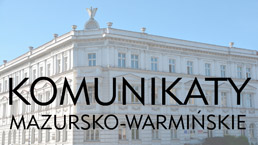Current issue
Online first
Special issues
Archive
About the Journal
Editorial Board
Editorial Council
Reviewers
Editorial guidelines
Publication ethics
Guidelines for reviewing
Remarks on “ghostwriting”
Copyrights and Open Access rule
GDPR Privacy Notice – for the authors of articles sent for publication in the "Komunikaty Mazursko-Warmińskie ("Masuro-Warmian Bulletin")
Contact
Price list
An outline of the role of local government in the territorial
administrative system in Poland after 1945
1
Instytut Północny im. Wojciecha Kętrzyńskiego w Olsztynie
Online publication date: 2017-04-04
Publication date: 2017-04-05
KMW 2017;295(1):95-108
KEYWORDS
TOPICS
ABSTRACT
In post–war Poland, there was a specific system of administration in which the structures of the general
authority with its representative bodies and the fragmented, temporary, territorial self–government co-existed.
The nature of the introduced system became particularly visible after 1950, alongside the strengthening
of the ruling body and the realisation of the vision of the “unification of state power” in the field. In essence, local
self–government was liquidated. This solution, as it was envisaged, was intended to guarantee the widespread
democratisation of public life and the transparency of state governance. In practice, the non–democratic system of
local administration ensured, amongst other things, a means of conducting the elections, limited the possibilities
for decision–making by local councilors on matters relating to their districts and a lack of financial autonomy of
the administration, which was the essence of self–government.
The political and administrative supervision of local government bodies operating in the area of national
councils was subordinated in an unnatural way to the ruling party. At the same time, the diffusion of the competences and activities of the general administration and national councils was not an isolated phenomenon, in
practice causing the actions of individual members of the administration to be unclear, slow and ineffective.
We process personal data collected when visiting the website. The function of obtaining information about users and their behavior is carried out by voluntarily entered information in forms and saving cookies in end devices. Data, including cookies, are used to provide services, improve the user experience and to analyze the traffic in accordance with the Privacy policy. Data are also collected and processed by Google Analytics tool (more).
You can change cookies settings in your browser. Restricted use of cookies in the browser configuration may affect some functionalities of the website.
You can change cookies settings in your browser. Restricted use of cookies in the browser configuration may affect some functionalities of the website.




